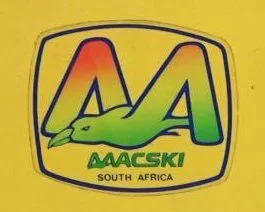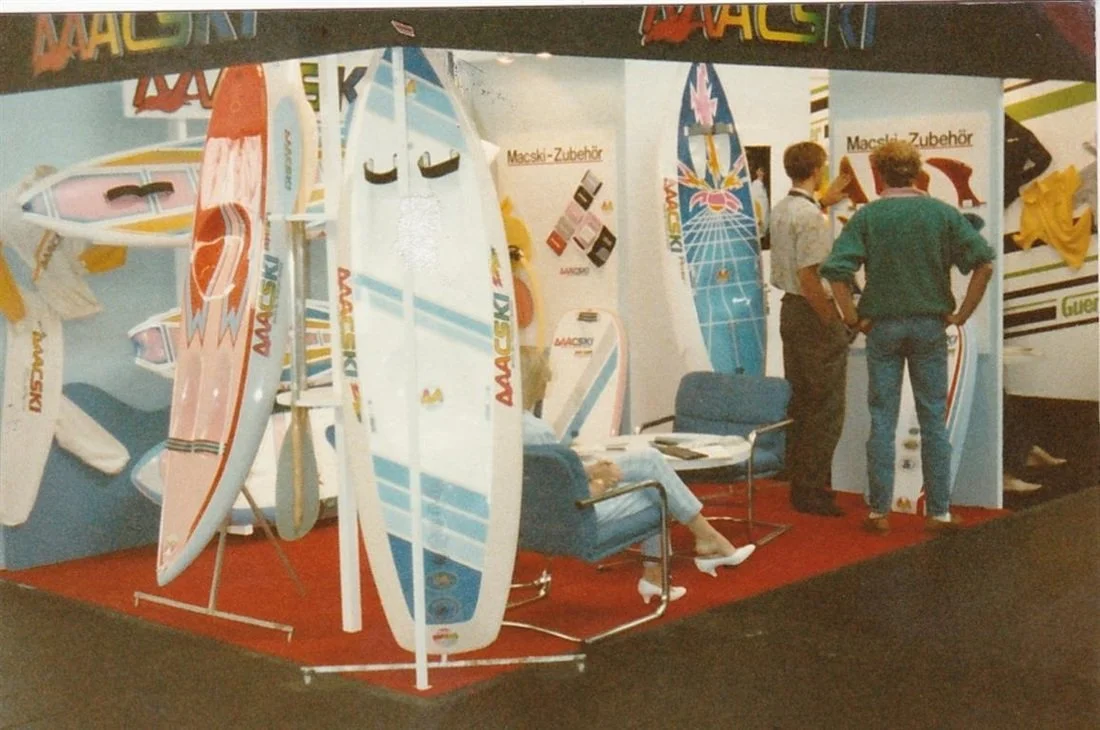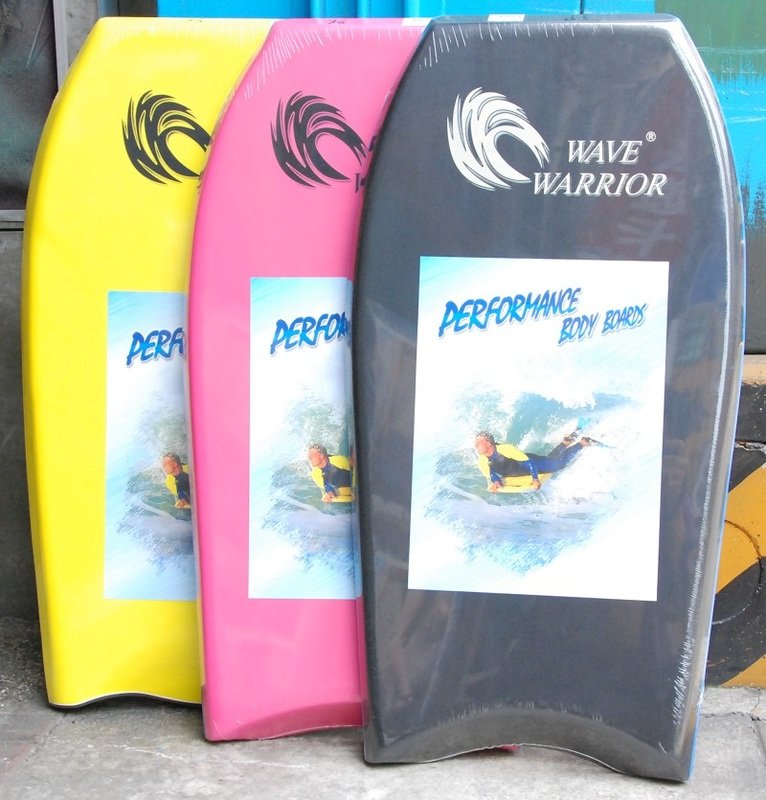The Macski Legend
Orginal Article - http://www.millerslocal.co.za/the-man-behind-macski---john-macleod.html
As much as we all hate the beasterly easterlies, the desperation they induce can give rise to inspiration. Roll back the clock to the late 70's. Local surfer John MacLeod was sitting in the dunes at Pipe staring at the onshore ocean. Needing a dose of salt-water he decided to take out one of the lifesavers "boats".
Huge 8ft6 ft ski's with a shallow seat and footwells, but no fins, that you sat on and paddled. They were notorious for careering through the line-up at Pipe and wiping out all the surfers - and after John had taken it out for a spin he knew why - they were impossible to control cos they had no fins.
Coming from a design and engineering background John just thought there had to be a better way to make them, so that they had more directional control. As a surfer he wasn't at all interested in using them himself, he just saw a problem, and went "Hey, I'm gonna have a bash at fixing it"
John got hold of Spider Murphy in Durbs via Graham Hynes. He sent off his drawings to Spider of what he thought the ski should look like, and about 3 months later Spider had finished making the very first waveski, complete with a fin. John flew up to fetch it, and on returning to PE proceeded to make the molds from it, so he could manufacture them locally in PE. The backyard business needed a name, and so Macski was borne. A brand synonymous with paddleski's and waveski's world wide. And it all started on the beach at Pipe. Thanks to an easterly. The year was 1979.
Why the gull in the logo? John decided the "M" looked like a seagulls wings. As he already had an agency business, and thus had a warehouse - he started making the boards in a shed out in the yard. John recalls taking one of his first paddleski's down to the carpark at Pipe, and having all the surfers just laugh at him. A niggle of doubt flashed through his mind about whether what he'd invented was going to actually gain acceptance or not. But he persisted.
He continued to surf, despite making the ski's. And took flak from many of the surfers because he was introducing egg-beaters to the line-ups, who weren't renowned for their line-up etiquette.
There was only one model to start with - the Macski Juice. Designs modifications mimicked the trend in surfboards - and so as twinnies became popular so the paddleski's got two fins. When the thrusters came out, the ski's got three fins. Eventually the brand expanded into offering about 10 different models. Everything from high performance ski's to the float-anything-and-impossible-to-fall-off Jan Publiek model called the SuperMac, that most of us owned at some point in our lives.
Every garage has one!
Being in the agency business John used to travel the country repping his goods, so the waveski's just got dragged along and sold to all the sports shops in the towns he visited. Business boomed. Together with his wife Denys they opened Oceans Surf Shop in Kine Park in 1979, which stocked the ski's and other surf related products (more on that story to come!). At one stage Dave Lippie's Surf Centre in Loop Street was selling 200 Macski's a season. During the 80's pretty much anyone riding a waveski was on a Macski. There's probably still one in every garage along the coast to this day.
John and Denys took the brand global in 1984 - attending tradeshows in Europe, Australia, Israel and the States. By this stage John had stopped surfing and was to become a dedicated waveskier for the next 16 years. Riding his way to 3 World Championship titles in the Master's division (Cape Town '84, Hawaii '86 and Durban '94), as well as winning his division in SA Champs from '82 through to '91.
The World Wave Ski Association reported that at one stage there were over a quarter million waveskiers worldwide - 150,000 in Australia, 75,000 in South Africa, 25,000 in England, 25,000 in New Zealand and another 25,000 in Japan, Brazil, Korea and the United States.
Europe tradeshow
The waveski market reached it's zenith in 1987, but the very next year saw sales drop by nearly half. Mountain biking and skateboarding came onto the scene and started to compete for a slice of the leisure market, and paddleski sales suffered as a consequence.
By this stage Macski had diversified into a number of other wave-riding vehicles - such as kayaks, fishing ski's, windsurfers, lifesaving equipment and bodyboards. The bodyboards had started out as fibreglass boards with fins and a handle (I was - and still am - the proud owner of one, purchased at Oceans Surf Shop in 1985). They were pretty deathly in a crowded line-up of bobbing beach-goers! And if your hand got stuck in the handle when you wiped out your wrist got bent in directions it shouldn't have.
Things quickly progressed from fibreglass to foam boogieboards, and Macski's Wave Warrior bodyboards were at one stage selling about 66 000 boards a year across all their ranges! I'd bet on the fact that every single person reading this had growing up (and probably still remembers the rash too!)
The early fiberglass models
The later Wave Warrior models
John finally made the move back to surfing in '97, after having struggled to compete at the SA Champs held at Noordhoek cos of a trashed back from all the years of hammering it took in the waveski. Not only a messed up back, but a chronic tennis elbow made holding the paddle almost impossible.
A few years later John was sitting in the office one day, and suddenly just had a vision appear in front of him almost like he was looking at a TV screen. It was of a strange looking waveski - with a large bump where the seat depression should be. Not wanting to glance away in case it disappeared, he fumbled about the desk trying to feel for a pen and paper so he could draw what he was seeing. The vision faded, and the kneeling waveski was borne.
He gave the design to Ian, his son, who was running the factory by then. Ian made the board, which had an elevated seat post that allowed for an open angle of the hips, and deep wells for the lower leg to rest in. It meant that all the pressure was taken off the lower back, and instead dealt with by the quads. Local chiro Russel Hill, who'd been helping John with his chronic back problems just took one look at it and said - "That's a perfect ergonomic design!"
It was named the Core Board. Initially John used it like a kneeboard, no paddle - but with gloves. Then he made a short paddle for it, and it became the most mobile waveski ever made. It could turn like nothing else on the market. He patented the design, and many of the top local waveskiers started to use it.
John trying out the new kneeling model (check all the boogieboards in the background!)
PE local Craig Seale took one to the World Champs in Brazil in 1999, and was just annihilating the guys in his heats, and finished 3rd overall in the Senior division. A controversy raged about the design though, with many traditionalists complaining that it shouldn't be allowed to compete. People said it should have it's own division at the Champs. John didn't want to be involved in the furore, and contacted the World Waveski association, telling them he'd give up his patent right to it so everyone could make it. Despite being so much more maneuverable (and back-friendly) than the traditional paddleski, the design didn't take off.
Craig ripping on his Macski Core-board at the 99 World Champs in Brazil
John stayed involved in the brand until 2004, when he handed it over to his sons Alistair and Ian to run. Ian finally sold Macski to Durban-based Ant Stott in 2014, as he moved over to the States - where he continues to build Macski waveski's today.
Not only did John MacLeod create the paddleski/waveski legacy in South Africa and abroad, together with his sons he holds the unique achievement of being the only family in the world where 3 family members have won a world title in waveskiing. PE might be a small town, but it's full of incredible people doing amazing things!
The Mac's on a recent trip to Aus. Behind every successful man is a great wife!












